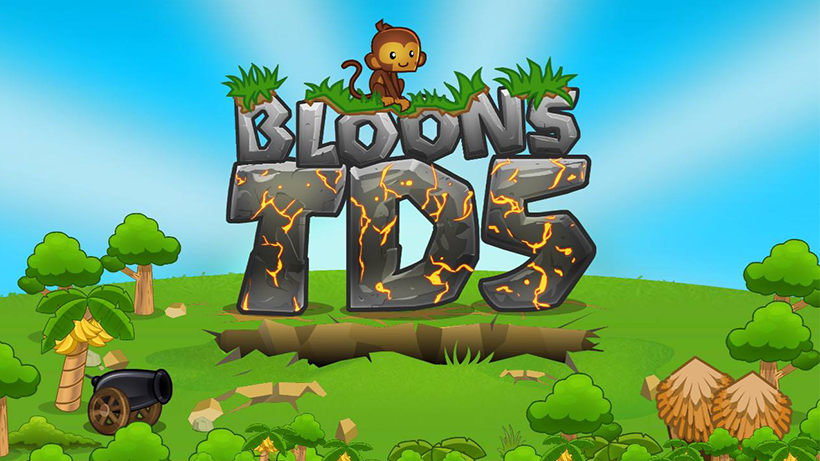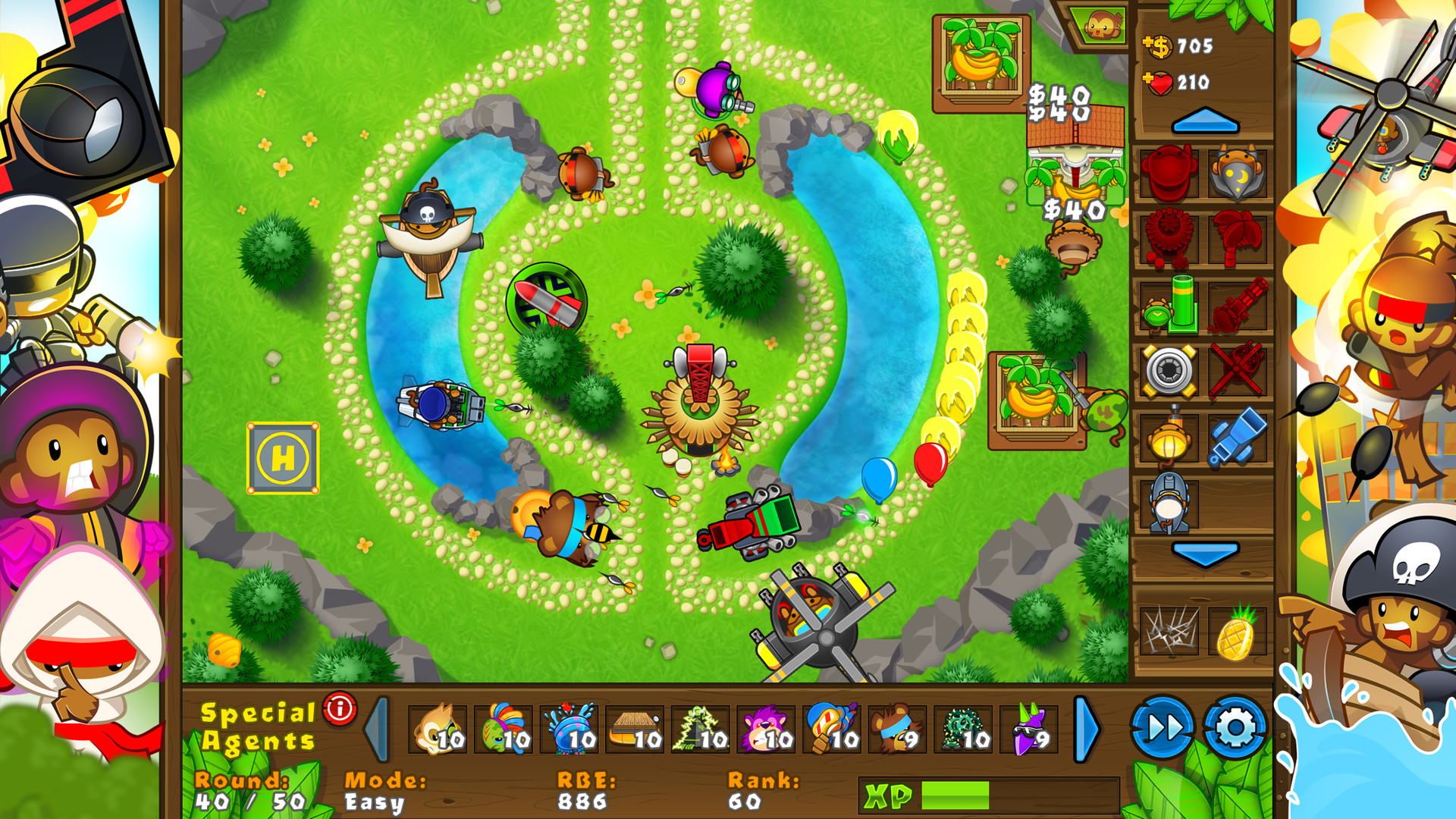The Game
Bloons Tower Defense 5 is a free single player tower defense game in the Bloons series created and produced by Ninja Kiwi. The game is mostly popular on Adobe Flash but is also available as a mobile game. Anyone can play this game, even kids as it doesn’t take much strategy to succeed in the early rounds; therefore, the target audience is anyone who would enjoy playing a free, short, single player game on their computer or phone.

Formal Elements
There are two important formal elements which heavily impact gameplay: resources and conflict.
The main conflict comes from the attack of balloons or bloons. In the game, bloons file in from the start of the track and move through until reaching the end of the track. For each bloon that makes it to the end of the track, players lose a life. In order to combat this conflict, players can place special monkeys/towers along the track that can pop the bloons. The powers of the monkeys vary: some towers pop bloons, while others slow them down. For each bloons that is popped, the player earns money.
Money and lives are the main resource of the game. Players are given a small amount of money to start with and they can use this to buy a few basic monkeys. As the player pops bloons in each level, they gain more money and can eventually save up in order to buy more expensive and high performing monkeys. The strategy comes from determining the wisest way to spend your limited money.

Balance
As a single player game, pacing is an important consideration in BTD. The game has a wide array of intended audience members, kids can easily play and have fun with BTD (I started playing this and other flash games in elementary school) but the game is still fun for me as an adult. This is achieved by game designers using excellent pacing. The difficulty of a given game can be set to easy, medium, and hard to control the amount of money you have and the pricing of the items.
Every level follows the exact same pattern: bloons enter from one side, get popped by your monkeys along the way, and finally exit out the other side. Therefore each level is an arc and the player follows a repeating series of arcs which get harder every level. The first level the player encounters is extremely easy; it’s basically an in-game tutorial through experience for the player to understand the game mechanics. Slowly, the levels incorporate challenges such as faster bloons, more bloons, and bloons that have defenses like lead and camo. For the novice player or young player, these levels are the perfect difficulty. They include a little challenge but can be defeated even if the player is not being very strategic in their monkey choices or placement of towers. For advanced players, it would seem that these initial levels might be too easy and drive them away. However, these levels are actually still exciting for advanced players because the player gets to slowly build up their monkey and tower defense army. Throughout these initial levels, advanced players use a lot of strategy to make smart purchases of monkeys so that their track will be properly ready and defended once the levels start getting really challenging.
This is a great balance because easy players find the initial levels fun through challenge and advanced players find initial levels fun through expressions and creativity. Once the levels start getting harder, easy players may fall out after losing while advanced players get their challenge in. In my opinion, balance is a huge reason why this game is addicting. No matter where you’re at on the spectrum of difficulty, the game can match you and still create a fun challenge.
Besides pacing, balance is also achieved in the game through the relationship between game objects. In BTD, game objects have a transitive relationship. The cost/benefit of a monkey in the game is determined by the amount of currency it costs versus the amount of currency it will return back to you over time through the act of popping bloons. The cheapest monkeys are dart monkey which can shoot one bloon at a time quite slowly. The most powerful monkeys are those that can see the hidden camo bloons or the monkeys that can shoot streams of nonstop darts at bloons, but these cost much more.
Types of Fun
Players find BTD fun because it is challenging. Even if you beat the game, there are still levels that get increasingly harder and harder until you eventually can’t fit any more monkeys on the track and lose. Strategizing your use of currency and the optimal placement of towers on different shaped tracks is a challenge that never gets old. Since the game is single player, the challenge is for the player to get better by beating a harder level or increasing the challenge with a higher difficulty setting rather than winning the game or beating someone else.
An additional type of fun in BTD is expression. There are infinite possibilities for how a player may decide to set up their towers in the game. Players can put their creativity to the test by exploring different patterns of arranging their monkeys and the powers they want to shine through in their setup. I think the expression is a secondary fun-type here. Players would likely not be playing this game purely for the thrill of placing their monkey in new and exciting ways because the challenge of the game would get in the way, they would lose the game by focusing solely on creativity. Rather, expression makes the game fun when you’ve played many times before. Even if you’re playing a level you’ve beaten before, you can win in a different way by exercising your creativity.


